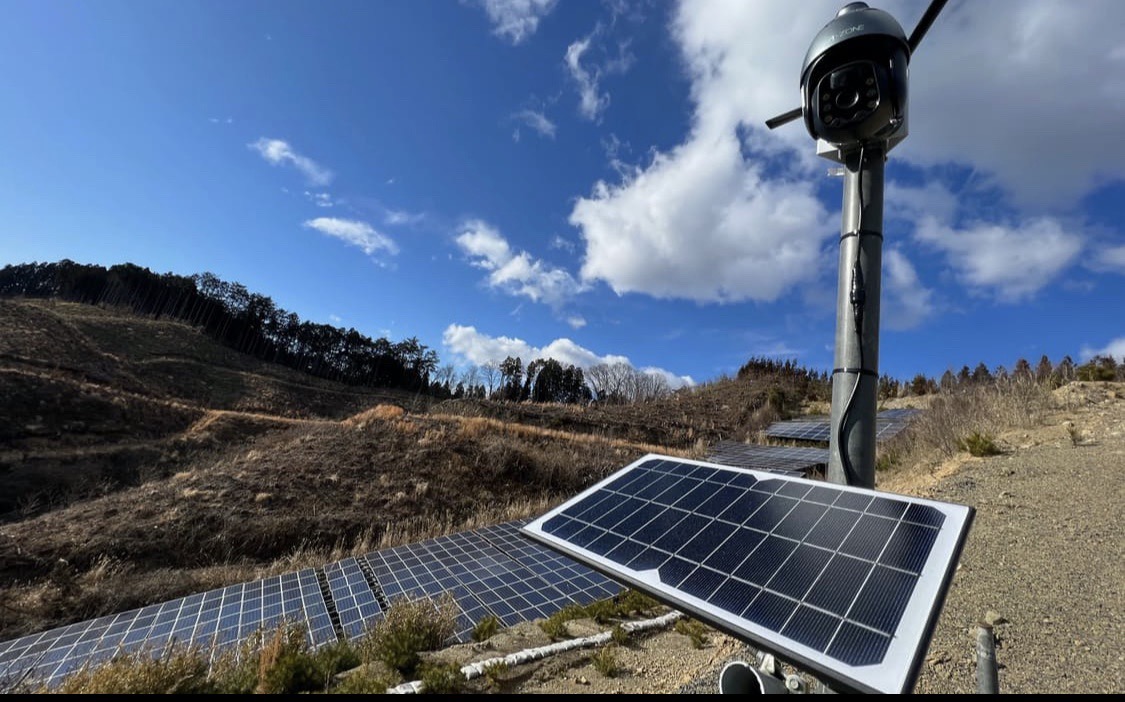From Chisato Horiuchi in Tokyo, Japan

Afterfit has its own observation equipment such as solar radiation sensor and cloud camera (provided by the company).
In order to accelerate the spread of photovoltaic power generation, which is indispensable for reducing greenhouse gases, it is necessary to minimize the effects of output fluctuations. One of the methods is to utilize the prediction of the amount of solar radiation and the amount of power generation. From research to the practical stage, various prediction services and technologies have begun to spread.
■ Reduce "output suppression"
"A slight difference in the position of the front will greatly change the output of solar power generation in Kyushu." Kyushu Electric Power Transmission and Distribution (Fukuoka City) Central Power Supply Command Center Taishi Koga, Group Leader, said:
If the front is far away, there are many thin clouds and there is sunlight, but if it is close, it is covered with thick clouds and it is dark, and there is a difference of about 2 million kilowatts in output. 20% of the installed capacity of about 10 million kilowatts connected to the power system in Kyushu as a whole is equivalent to the output of several general thermal power plants.
Since 2018, Kyushu Electric Power has been implementing output curtailment when the supply of solar power generation greatly exceeds demand, preventing frequency instability. If the amount of power generation can be predicted accurately, the output of thermal power generation and pumped storage power generation can be adjusted systematically to reduce the output suppression of solar power generation.
The emphasis is on short-term forecasts up to about 3 days ahead and short-term forecasts up to about 3 hours ahead. Short-term prediction is useful for suppressing the output of photovoltaic power generation if online control is possible. If you are offline, contact the power generation company by phone or fax and ask them to work, so refer to the short-term forecast. Short-term forecasts can also be used to adjust the output of thermal power generation, which takes one to two days to start.
■ Penalty fee risk
Kyushu Electric Power Transmission Co., Ltd. has installed its own pyranometers in nearly 70 locations, and has been working with the Japan Weather Association on a three-legged race to improve the quality of forecast information. Still, there is a non-negligible error.
In order to improve the accuracy, the Japan Weather Association started a service to sequentially correct the amount of solar radiation and output prediction every 30 minutes based on observations from the ground and satellites in October 2009. In February 2010, a two-week solar radiation forecast was added to the menu.
Japan Weather Association aims to improve the accuracy of solar radiation prediction by "sequential correction" every 30 minutes
Renewable energy will replace the current feed-in tariff (FIT), and from April, the government will start a system called "FIP" to buy and sell generated electricity in the market and subsidize it by adding a certain amount to the price. The utility must indicate the power generation plan at least one hour before supply. If there is a difference from the actual results, a penalty fee will be paid to the power transmission and distribution company. Accurate forecasting becomes more important to reduce this risk.
■ Learn local habits
Weathernews will also focus on nowcasting every 30 minutes up to 6 hours ahead and short-term forecasts up to 3 days ahead. By combining an original weather forecast model with artificial intelligence (AI), we have developed a method for learning local habits. The moisture content of clouds is also estimated from the humidity and temperature of the sky. It is said that the accuracy of short-term forecasts has been improved by 11% compared to the forecast model called the Japan Meteorological Agency's meso model.
Small weather sensors "Soratena" with communication function have already been installed in about 3,000 locations nationwide. We are increasing the types that can measure not only temperature, atmospheric pressure, humidity, and rainfall, but also illuminance, and we hope to estimate the amount of solar radiation and use it to improve the accuracy of nowcasting.
Weathernews provides forecasts of solar radiation up to 72 hours ahead, every 30 minutes at 1km intervals
AfterFIT (afterfit, Tokyo / Minato), which develops solar power plants, predicts the amount of solar radiation and power generation in-house. I considered using information from other companies, but "the next day's solar radiation forecast was often 30-40% different from the actual one, and the accuracy was insufficient," said President Tanimoto.
■ Reduce the error to less than half
In addition to satellite data from the Japan Meteorological Agency, cloud images taken from the ground with an all-sky camera are used. Introduced a method of dividing clouds into patterns and correcting the amount of solar radiation, so that the error can be suppressed to less than half compared to the conventional method. The plan is to install small measurement systems in 10,000 locations that combine solar panels, solar radiation sensors, temperature / humidity meters, and barometers. The data will also be used for maintenance and inspection, such as detecting malfunctions in solar panels.
The company is developing a "corporate PPA" business that installs and maintains solar panels free of charge in the parking lots of retail stores and receives electricity charges generated. At that time, the installation of observation equipment will be provided as an option. After the transition to FIP, he plans to call on the power generation company of the contract partner to install it as an aggregator (power saving intermediary).
Although the problem of instability of photovoltaic power generation cannot be solved only by forecasting the amount of solar radiation, there is no doubt that it will lead to improvements in usability and reliability. It will support the transition from coal-fired power generation to solar energy. The repeated efforts of various players involved in the electric power business will be a great force for reducing greenhouse gases.






